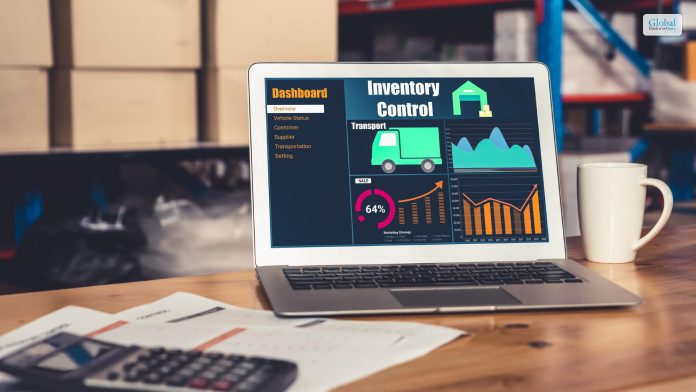Periodic Inventory System: What Is It, How It Works, Applications, And More

The periodic inventory system is the method through which a business does a valuation of its inventory. Here, the business updates its inventory account at the end of each accounting period and not after each sale, wholesale, or purchase. The main advantage of this system is that it helps the business track its beginning and ending inventory within an accounting period.
In this article, you will learn about what a periodic inventory system is in general. Apart from that, you will also learn how a period inventory system works. In addition to that, you will also learn the difference between a periodic inventory system and a perpetual inventory system. Finally, you will learn how to use such a system in your business model. Hence, to learn more about this system, read on through to the end of the article.
What Is A Periodic Inventory System?

Investopedia defines –
“The term periodic inventory system refers to a method of inventory valuation for financial reporting purposes in which a physical count of the inventory is performed at specific intervals. As an accounting method, periodic inventory takes inventory at the beginning of a period, adds new inventory purchases during the period, and deducts ending inventory to derive the cost of goods sold (COGS).”
The best thing about a periodic inventory system is that it is easier to implement. Apart from that, it is also a cost-effective option for companies that are usually small in size. Another major advantage of a period inventory system is that it helps the business manage risks in the supply chain better.
It is an accounting technique where the accountant updates the count of the physical inventory at specific intervals. One can execute a period inventory count monthly, quarterly, and annually. Here, the accountant does not update the account regularly or after each sale of products and services.
However, this system of accounting is a great option for small businesses only. When it comes to larger companies, they use the perpetual inventory system. Here, the companies update their inventory lists regularly (or after each sale).
How Does A Periodic Inventory System Work?
The inventory of a business is nothing but the goods that the company has in its hand, and it can make them available for sale. In general cases, a business holds inventory in the normal course of business. Furthermore, the inventory is also one of the most valuable assets of the business. This is because those inventories create the primary source of revenue for the business.
According to FreshBooks.com,
“In a periodic inventory system, no continuous record of changes is kept. The yearly inventory purchases are recorded in the purchases account, which is a ledger listing all inventory purchases and their costs. At the end of the year, a physical inventory count is done to determine the ending inventory balance and the cost of goods sold.”
In this accounting system, the business keeps a physical count of inventory at certain periods of time. With the periodic inventory system, the time is mostly monthly, quarterly, or annually. This means that the company that uses this system tracks its inventory at hand both at the beginning and the end of a specific accounting period.
Here, the company does not track its inventory on a regular basis or during sales. With this inventory system, the company also finds it easier to track the costs of all the goods sold. This inventory updating system is popular among smaller companies that do not have the necessary tools and manpower to conduct regular updates of inventory. Also, these companies have smaller quantities of inventory.
Periodic Inventory System Vs. Perpetual Inventory System
In the periodic inventory system, the company does not have full information regarding its levels of inventory. Apart from that, it also does not know all the costs of goods sold until the completion of the physical count process.
Hence, this system is the best option for businesses that have a smaller number of stock-keeping units (SKUs). Furthermore, the company also needs to operate in a market that plods. In other cases, the perpetual inventory system is a better option for all.
The following are the major differences between a periodic inventory system and a perpetual inventory system:
- The perpetual inventory system updates the inventory asset ledger on a regular basis or after each sale. As a result, the management gets an instant view of the inventory. On the other hand, the periodic inventory system is more time-consuming and does not get updated information.
- With the help of the perpetual system, the company can always keep its COGS updated. On the other hand, the periodicity of the periodic system makes it less useful when it comes to staying updated.
- The perpetual system tracks individual items in the inventory. Hence, it is easier to locate defective items quickly. However, the periodic system does not help in this regard.
When To Use A Periodic Inventory System?
According to Netsuite.com,
“Any business can use a periodic system since there’s no need for additional equipment or coding to operate it, and therefore it costs less to implement and maintain. Further, you can train staff to provide simple inventory counts when time is limited, or you have high staff turnover.”
However, the periodic system is most suitable for small companies with a low number of SKUs. This is because such a business is not concerned fully about scaling its business at the given moment. Apart from that, based on your needs and the types of products you deal with, you can use a periodic system along with a perpetual inventory system.
Furthermore, if you have good control of your supply chain system and you sell only a few products, then the periodic system is the better option for you.
Wrapping Up
The periodic inventory system is the best option for only those companies that deal with only small quantities of goods. Apart from that, companies that are not looking for scale at the moment and have only a limited number of employees must use this inventory accounting system.
Do you have more suggestions on how to use the best inventory accounting system? Consider sharing your ideas and opinions with us in the comments section below.
Read More By Clicking Below!!













